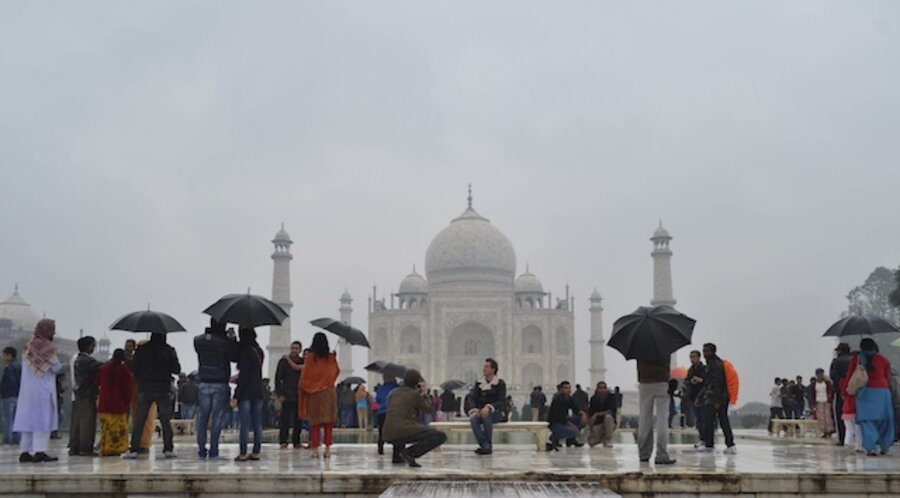How do you say Taj Mahal in Chinese? India seeks tourists
Loading...
| Beijing
India is joining the global pursuit of some of China’s most valuable assets – its big-spending tourists.
With a campaign in 12 Chinese cities this spring, the world’s second-most populous nation hopes to capture the imagination of travelers from the most populated country. The promotion, called “Glimpses of India,” kicked off last month in Beijing with music and dance performances at the showpiece Poly Theatre. In March, India changed the rules to make it easier for Chinese visitors to get visas.
The moves are showing a gentler side to China-India relations, which have been tested by border disputes and economic rivalry. But there's no guarantee Chinese tourists, of which nearly 100 million traveled overseas last year, will bite.
Simply put, many Chinese tourists not all that interested in India. “If I spend a lot of money on international travel, I would expect to stay in nice places and eat good food, as well as go for lots of shopping. I don’t think India has what I want to find on holiday,” says Li Yang, a human resources manager in Beijing who has taken trips to Thailand and Britain.
As China’s traveling classes have swelled into the world’s biggest tourism spenders, only 100,000 of them visited India in 2012 and about 160,000 last year. Far more are drawn to Europe, despite the higher cost: France draws 1.4 million Chinese tourists a year. By contrast, 600,000 Indian tourists went to China in 2012.
Moneyed tourists from China tend to gravitate toward Europe and the United States, with luxury shopping high on their to-do list. High-profile news about rape in India, along with a perception that the country is crowded and messy have done little to endear India as a tourist destination.
China’s travelers often pick destinations with vacation packages designed specifically for Chinese tourists. India is seen as an off-the-beaten-path destination that requires work and planning, a mode of independent travel that most Chinese vacationers eschew. Plus, Indian visas have been notoriously more difficult to come by than those for other, more developed destinations.
India has responded with bureaucratic changes that promise a two-day visa turnaround for tourists from China. And many Chinese who've already toured India came away with a positive impression of the country.
“Although Sino-Indian relations are not always close, Indian people are very passionate and friendly to Chinese people,” says Taozijia de Xueli, a Shenzhen resident who visited India in 2012. “Whether drivers, waiters in hotels, passersby, the young Indian people whom we met asked to take photos with us….all of them were very kind, sincere and ready to help.”
Others aren’t so sure.
“My idea of India is that it’s crowded and not clean, and very dangerous if I am traveling alone,” says Cat Lee, a Beijing student who is saving for an overseas vacation next year, possibly in Malaysia. “I won’t plan to go there.”
On the other side of the coin, there has been some trepidation from Indians about the reputation of Chinese vacationers. High-profile incidents in several countries of boorish Chinese tourists have put a shadow over the millions who go abroad without incident.
But as China’s tourism numbers to India are still so low, actually examples of tourism-related tension are limited. In China, travel agents say tourists are working out trip plans.
Han Yushi, who works for a travel agency in Beijing, says the current India visa process is woefully inefficient. Though Mr. Han applauds the new guidelines, he says that having dealt with India's embassy for many years, he is not convinced the process will be entirely smooth.
“China and India always talk about friendship,” but it's not always carried out, he says.







